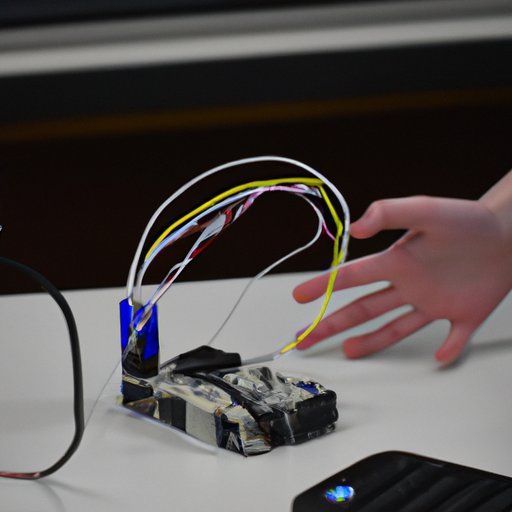Introduction
Robotics programming involves the use of software and hardware to control robots, machines that can be programmed to do a variety of tasks. Robotics programming is a complex process that requires knowledge of both hardware and software. It involves the use of sensors and actuators, as well as the development of algorithms to enable robots to perform the desired tasks.

Fundamental Concepts of Robotics Programming
In order to program a robot, it is important to understand the basic concepts of robotics programming. Sensors and actuators are two of the most important components of robotics programming. Sensors are devices that detect changes in their environment, such as temperature, light, and sound. Actuators are devices that allow robots to interact with their environment, such as motors and solenoids.
Sensors and actuators are connected to the robot’s computer system, which is responsible for interpreting the data from the sensors and executing commands from the actuators. The computer system is also responsible for running the software programs that control the robot’s behavior. The software programs are written in a programming language, such as C, C++, or Java.
Step-by-Step Instructions
Robotics programming requires careful planning and execution. The first step is to identify the task that the robot will be performing. This will help determine the type of sensors and actuators needed, as well as the programming language that will be used to write the code.
Once the task has been identified, the next step is to choose the right programming language. Different programming languages have different capabilities, so it is important to choose one that is best suited to the task. Popular languages include C, C++, Java, and Python.
The third step is to write the code. This involves writing instructions for the robot to follow. The instructions must be precise and must account for any possible scenarios that the robot may encounter. Once the code has been written, it must be tested and debugged to ensure that it is working correctly.

Different Types of Programming Languages
C, C++, and Java are the most popular programming languages for robotics programming. Each language has its own strengths and weaknesses, and should be chosen based on the task that the robot is performing. C is a low-level language that is best suited for applications that require precise control over the hardware. C++ is an object-oriented language that is often used for more complex applications. Java is a cross-platform language that can be used to develop applications that run on multiple platforms.
Python is another popular programming language for robotics. It is a high-level language that is easy to learn and understand. Python is often used for simpler tasks such as controlling motors or reading sensor data. Assembly language is another option for programming robots. It is a low-level language that allows for precise control of the hardware but is difficult to learn and understand.
Benefits of Using Robots in Various Industries
Robots can provide numerous benefits in many industries, including increased efficiency and productivity, improved accuracy and quality, and reduced costs. Automation can reduce the amount of manual labor required, allowing companies to produce more products in less time. Additionally, robots can improve accuracy and quality by eliminating human errors. Finally, robots can reduce costs by reducing the need for human labor and materials.

Successful Examples of Programmed Robots
Robots have been successfully used in many industries to automate processes and improve productivity. Automated manufacturing is one of the most common applications of robotics. Robots are used to assemble parts and products, as well as to inspect and test them. Robots are also used in search and rescue operations, where they can traverse hazardous terrain in search of survivors. Finally, robots are being used in medical diagnostics to analyze patient data and assist doctors in making decisions about treatments.
Conclusion
Robotics programming is a complex process that requires knowledge of both hardware and software. It involves the use of sensors and actuators, as well as the development of algorithms to enable robots to perform the desired tasks. Different programming languages have different capabilities, so it is important to choose one that is best suited to the task. Robots can provide numerous benefits in many industries, including increased efficiency and productivity, improved accuracy and quality, and reduced costs. Automated manufacturing, search and rescue, and medical diagnostics are just a few of the successful examples of programmed robots.
Robotics programming is a challenging but rewarding field. With the right knowledge and skills, anyone can learn how to program robots to perform a variety of tasks. By understanding the fundamentals of robotics programming, the benefits of using robots, and successful examples of programmed robots, you can gain a better understanding of the field and the possibilities it offers.
(Note: Is this article not meeting your expectations? Do you have knowledge or insights to share? Unlock new opportunities and expand your reach by joining our authors team. Click Registration to join us and share your expertise with our readers.)
